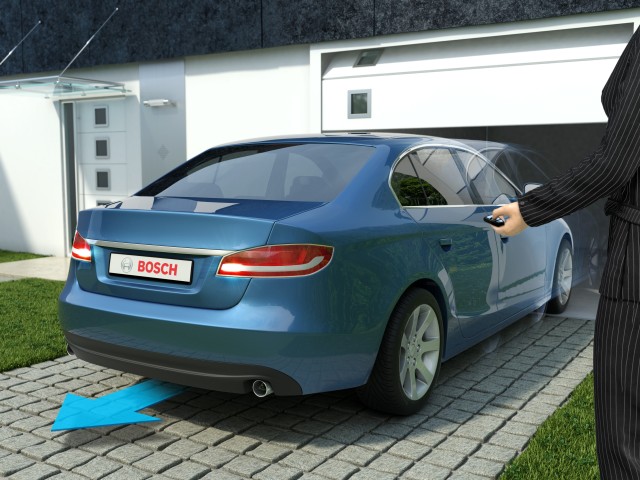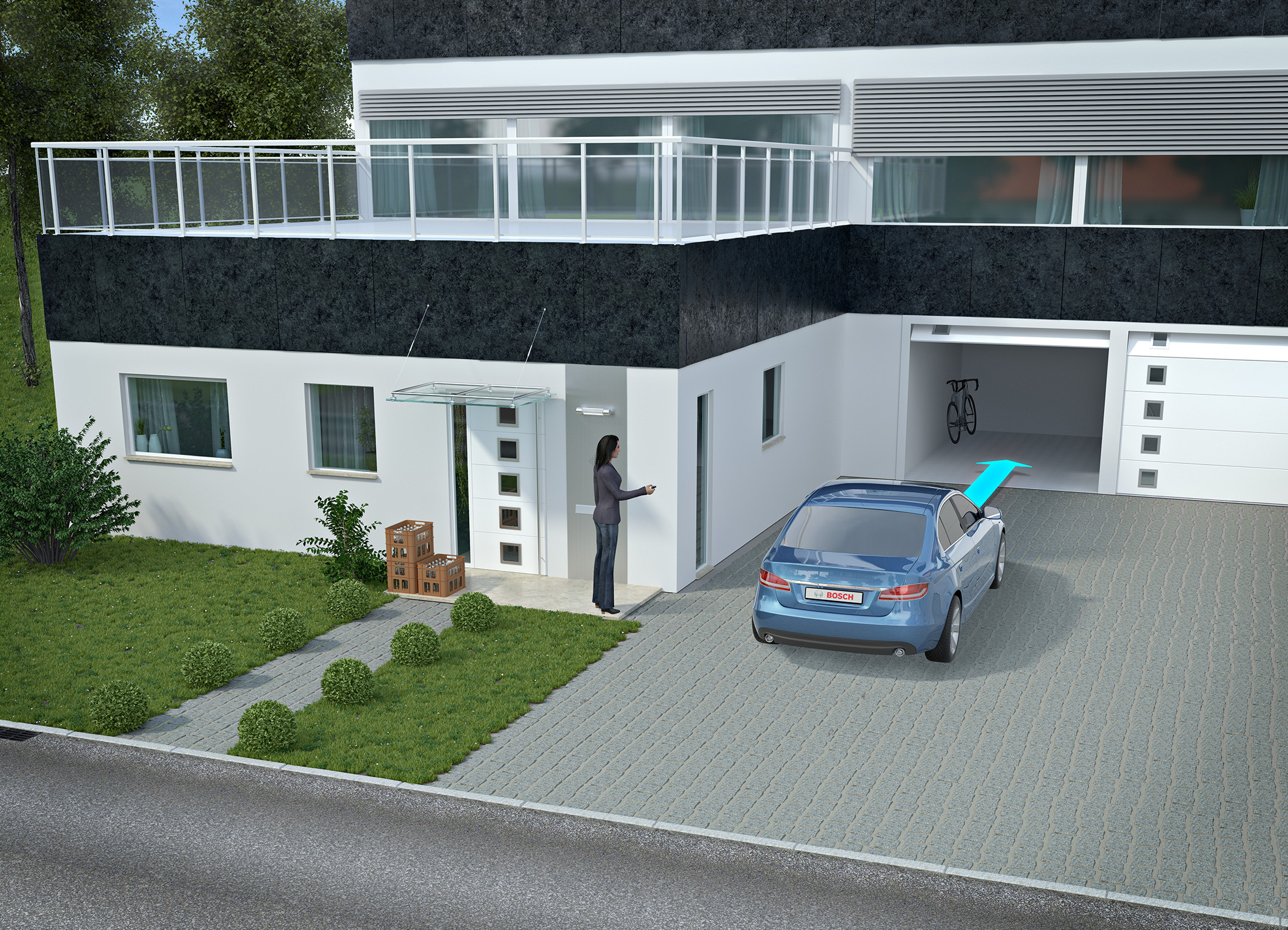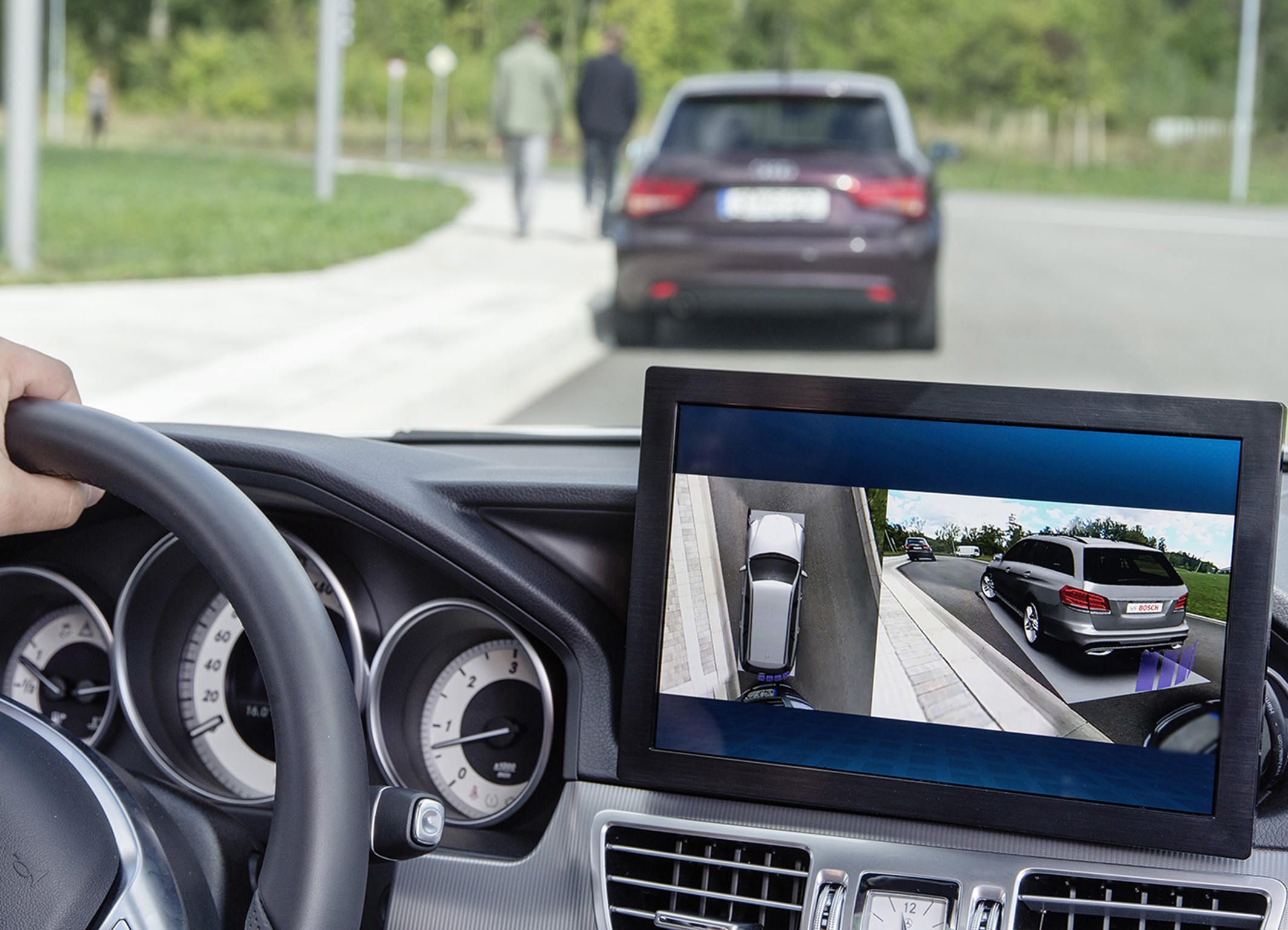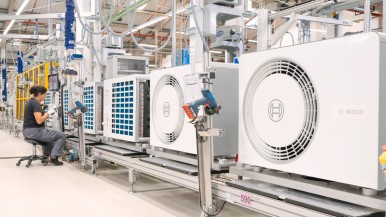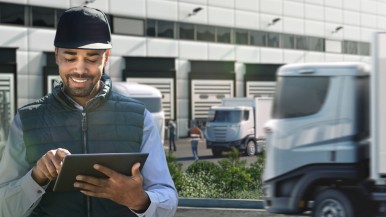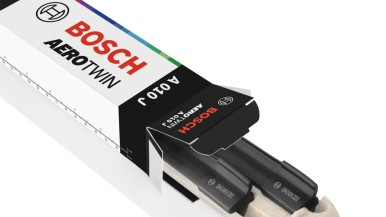Frankfurt, Germany – Parking a car can be hard work, especially since cars have generally been getting longer and wider over the years, while parking spaces and garages have not. In view of this, it is not surprising that parking is among the activities most likely to be associated with accidents. Help is availa-ble, though, in the form of Bosch electronic assistants. The parking aid, for in-stance, directs drivers into tight parking spaces with acoustic signals. And the park assist even takes control of the steering. “But if you’re parking somewhere where every centimeter counts, it’s usually more useful to see than to hear,” says Dr. Dirk Hoheisel, member of the board of management of Robert Bosch GmbH. At the IAA, therefore, Bosch is showcasing its new multi-camera system, a variant of which features in the new 7 Series BMW. This system gives drivers a clear view of what is happening during parking – all around the vehicle. To realize this, Bosch engineers turned to the kind of 3D visualization technology that is already used in Hollywood blockbusters.
Cameras capture surroundings from every angle
The multi-camera system comprises four tiny near-range cameras. One faces forward, another backward, while the two side cameras are integrated into the exterior rear-view mirrors. With an aperture of 190 degrees each, they capture the vehicle’s entire surroundings. The ingenious part is in the display, which blends the real and virtual worlds. Drivers see their vehicle as a true-to-life 3D model complete with detailed design features. Steering actions and the turning of the wheels are also displayed as animated graphics. The car’s immediate environment, however, appears in the form of real-time images. Using a touchscreen, for instance, drivers can select almost any perspective imaginable. This lets them look in front of the hood or behind the trunk, alongside the vehicle or with a bird’s-eye view from above. Whenever the driver selects a new perspective, the camera optically swings around the car to the new vantage point. Meanwhile, there is plenty of computing power on hand to continue showing the vehicle’s surroundings with real-time imagery.
The biggest challenge here is to make the image on the screen as lifelike as possible. To keep areas of overlap between the various cameras as free of dis-tortion as possible when stitching the images together, the developers dug deep into their box of tricks. As a result, Bosch is the first supplier in the market to dynamically adjust image borders depending on perspective. This means objects are always clearly visible, even at the points where images have been stitched together. What’s more, the ECU combines the camera images with distance information from ultrasonic sensors in a process known as sensor data fusion. Bosch uses the resulting data to generate a dynamic, three-dimensional wireframe around the virtual vehicle model, the shape of which is adjusted to match the changing surroundings. Bosch then projects the real-time images from the near-range cameras onto this wireframe. “It’s the same technology used for special effects in movies,” Hoheisel says. Unlike in two-dimensional systems, this allows objects that rise up to be portrayed more realistically instead of being seen from a top-down bird’s-eye view. Drivers benefit in two ways: first, the on-screen image shows the horizon, so they can better orient themselves; second, it makes even small obstacles easier to see.
Driverless parking in garages
Data from the near-range cameras and the ultrasonic sensors also enable the car to drive itself – for example into and out of a private garage. Drivers control the maneuver from outside the vehicle, by pressing a button on the key. This saves them having to squeeze in or out of the vehicle when it is parked in a tight space. From up to four meters away, the central Bosch ECU uses near-range cameras to detect the garage-door opening. It doesn’t matter whether the vehicle is standing directly in front of it or at a slight angle. If necessary, the angle of entry can be corrected by up to plus or minus 20 degrees. The multi-camera system then calculates the final parking position in relation to the vehicle’s current position. On the basis of the sensor data, the ECU constantly monitors the vehicle’s environment, thus preventing any collisions on the way into the garage.
For Bosch, automated parking begins in the vehicle – but it goes much further than that. Bosch active parking lot management, for instance, makes it easier to find a parking space. Bosch sensors installed in the pavement detect whether a parking space is free. The sensors forward this information to a server, where it can be entered into a real-time map. Drivers can then call up the map over the internet, and find out exactly where there are free parking spaces. And in conjunction with Daimler, Bosch is going even further. The two companies’ aim is an ambitious one. They want to revolutionize parking. Instead of customers parking and then looking for their cars again, vehicles will drive autonomously to a vacant parking space, then drive back autonomously and conveniently to the drop-off point when their drivers return. To this end, Bosch is developing the necessary infrastructure for parking structures, including occupancy sensors, cameras, and communications technology. The supplier of technology and services is also responsible for the in-vehicle communications unit which will control the parking maneuver, and is working with Daimler to define the interface with existing automotive components.
Contact person for press inquiries: Jörn Ebberg, phone: +49 711 811-26223

